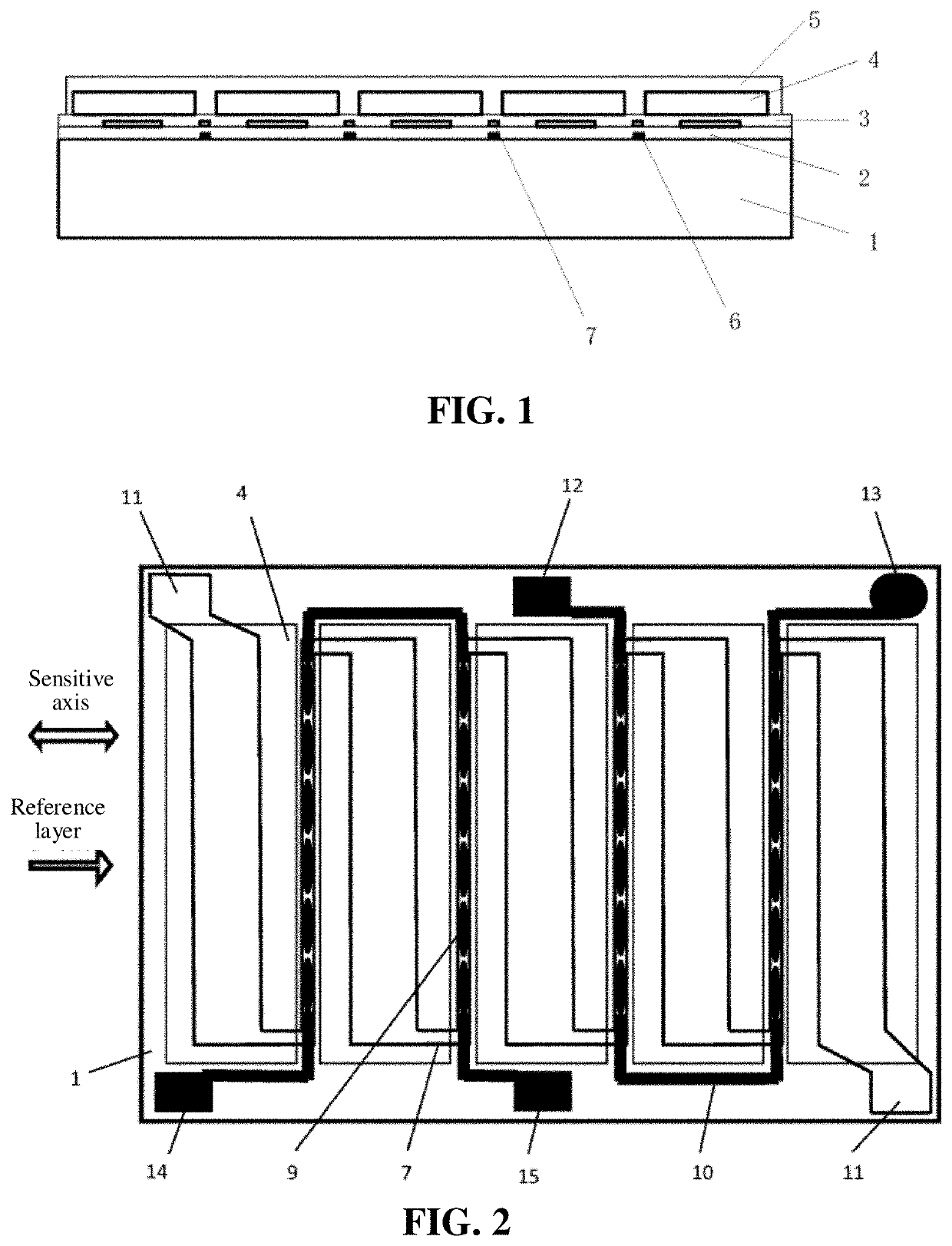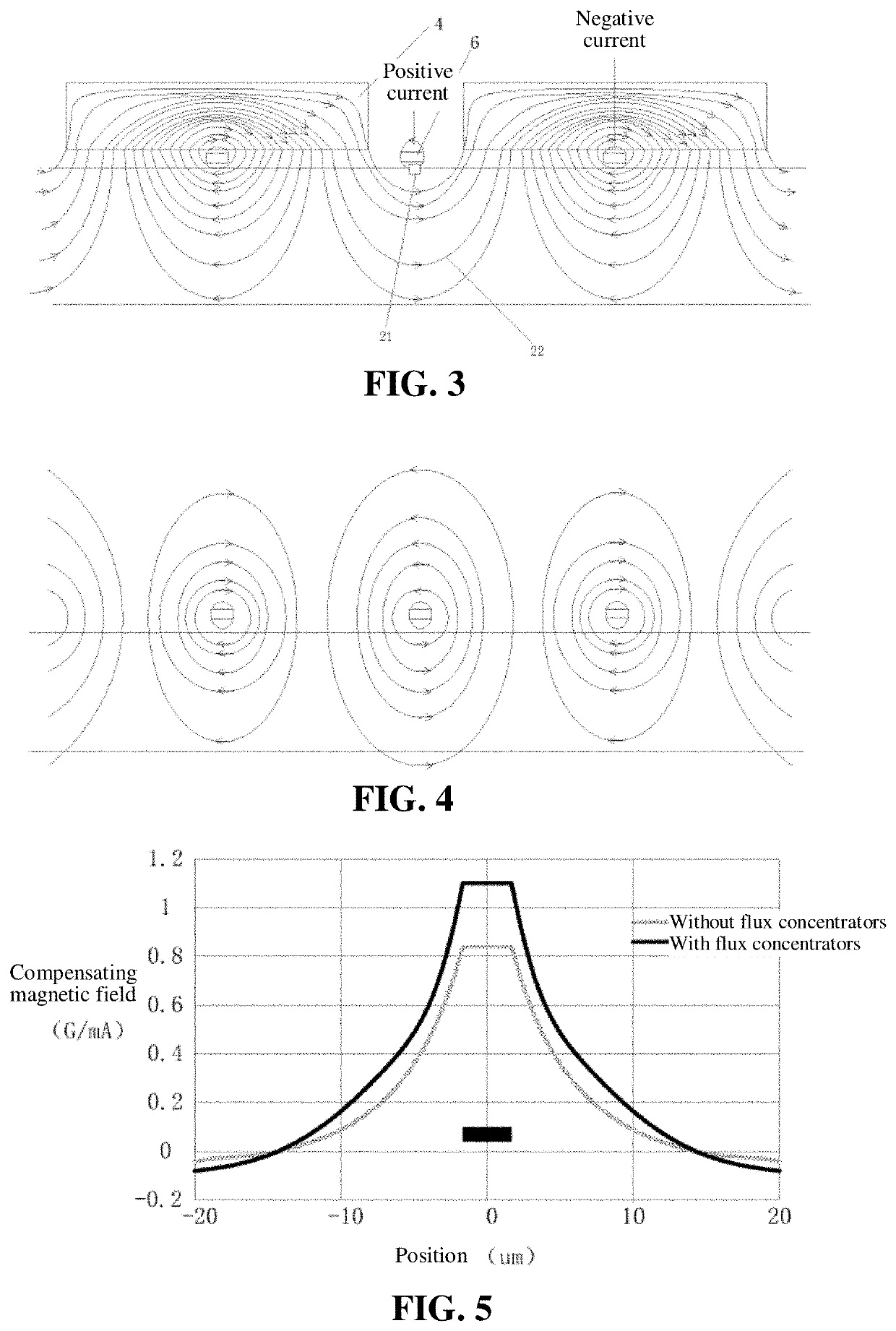Magnetoresistive sensor with compensating coil
a technology of magnetoresistive sensor and compensating coil, which is applied in the field of magnetic sensors, can solve the problems of large device area of amr sensor, poor space utilization, and high cost, and achieve the effects of small size, improved dynamic range, and reduced cos
- Summary
- Abstract
- Description
- Claims
- Application Information
AI Technical Summary
Benefits of technology
Problems solved by technology
Method used
Image
Examples
embodiment 1
[0034]FIG. 6 is a schematic diagram of an LGA encapsulation of the present invention, wherein 16 represents lead pads on the back of a substrate, and on the back of the magnetoresistive sensor, 17 represents a chip A, and 18 represents a chip B. The chip B is obtained by turning the chip A by 180 degrees. The PCB has an LGA encapsulation form. It can be seen from the figure that a pinning direction of a reference layer of the chip A is from left to right, while a pinning direction of a reference layer of the chip B is opposite to that of the chip A. The chip A and the chip B each consist of a sensor bridge formed by a collection of MR sensor units, a collection of rectangular soft ferromagnetic flux concentrators, and so on. The MR sensor units are interconnected in order to form a push-pull sensor bridge, and the collection of MR sensor units is disposed below the gap between two adjacent soft ferromagnetic flux concentrators.
[0035]FIG. 7 is a schematic circuit diagram of an LGA e...
embodiment 2
[0038]FIG. 9 is a schematic circuit diagram of an LGA encapsulation using a spiral initialization coil of the present invention. As shown in the figure, the chip A and the chip B form a full bridge circuit; a current direction of a compensating coil A disposed above the chip A is the same as that of the chip A, and a current direction of a compensating coil disposed above the chip B is the same as that of the chip B. Magnetic fields generated by the initialization coil and the compensating coil are orthogonal to each other.
PUM
 Login to View More
Login to View More Abstract
Description
Claims
Application Information
 Login to View More
Login to View More - Generate Ideas
- Intellectual Property
- Life Sciences
- Materials
- Tech Scout
- Unparalleled Data Quality
- Higher Quality Content
- 60% Fewer Hallucinations
Browse by: Latest US Patents, China's latest patents, Technical Efficacy Thesaurus, Application Domain, Technology Topic, Popular Technical Reports.
© 2025 PatSnap. All rights reserved.Legal|Privacy policy|Modern Slavery Act Transparency Statement|Sitemap|About US| Contact US: help@patsnap.com



